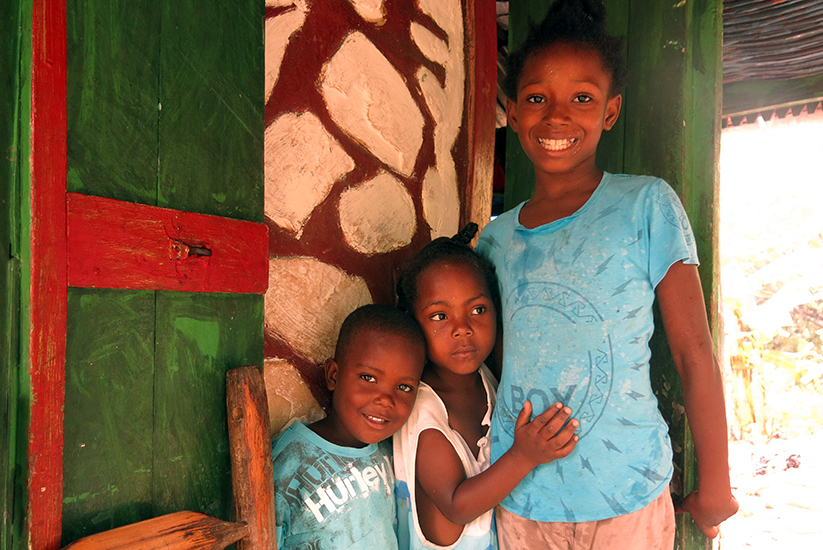
The Windward Passage can be quite tricky at this time of year when strong northeast trade winds reach gale force as they funnel through the gap between Cuba and Haiti. We waited for a lull in the trades and had a fabulous overnight sail from Santiago across to Point Tiburon at the west end of Haiti (there’s a map at the bottom of the page). In the lee of the island the wind veered and we picked up a west-setting counter current so the second night of the passage was spent motor-sailing slowly into a headwind.
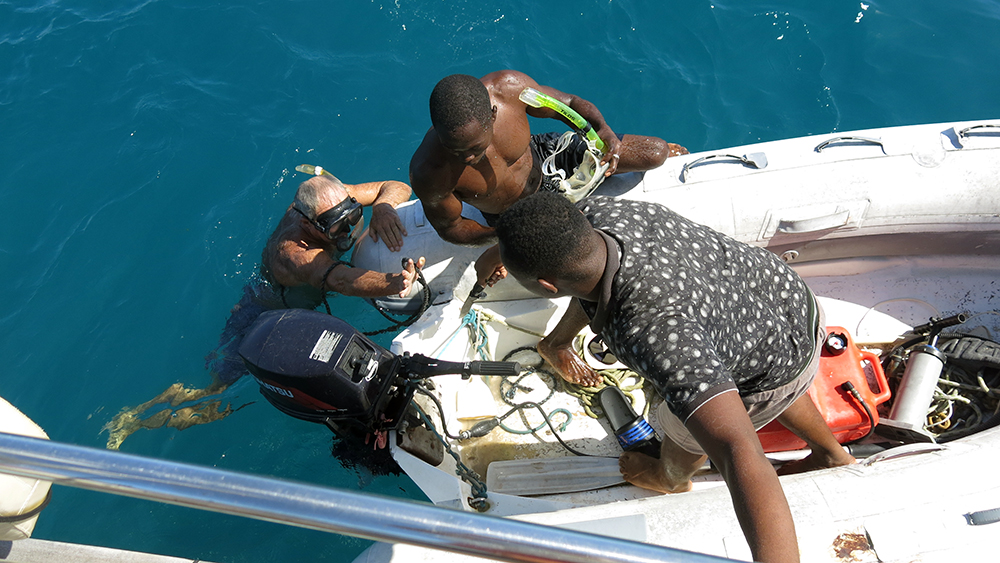
The next morning as we approached Ile a Vache the rope of a fishing net snagged around the propeller. Neil hopped into the water and cut away the rope but we were unsure what damage had been caused to the engine. Luckily a couple of local men who had come out to welcome us were able to tie their dinghy and 15HP outboard along side Distant Drummer and they towed us into Baie Feret where we dropped anchor. A very distressing end to the voyage.

Neil spent the next couple of days head down arse up in the engine room trying to assess the damage. Eventually he found a broken coupling which was fitted between the transmission and the prop shaft, it acted as a weak link and had prevented the locked prop from causing any serious damage to the engine. Surprisingly Ile a Vache has good internet coverage and we were able to get in touch with a Perkins specialist who had worked on DD back in British Columbia three years ago. He sourced a replacement part and had it on it’s way within a few days.
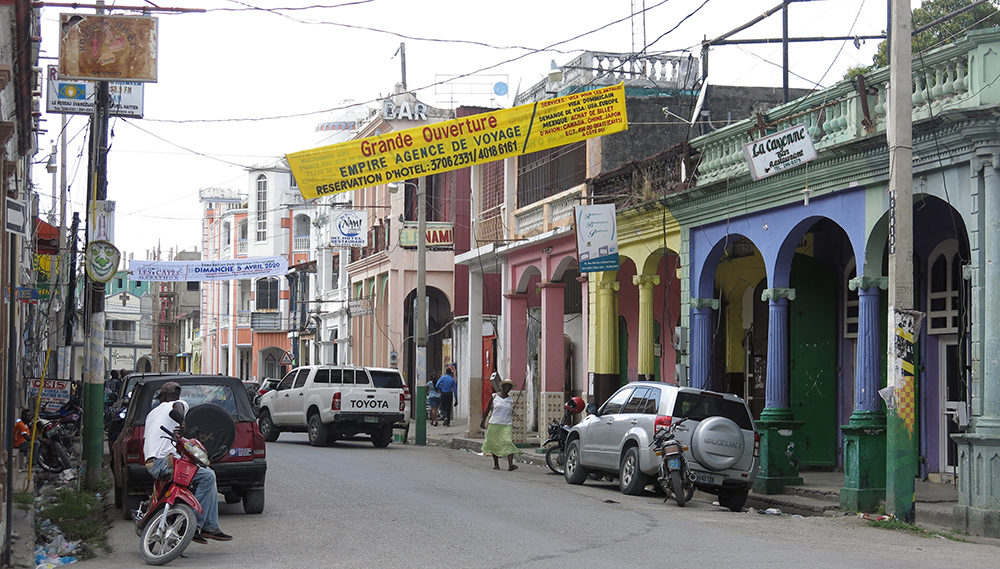
Ile a Vache is a small island of the south coast of Haiti and is a popular stopping point for cruisers heading east to wait for fair winds to move on to Dominican Republic. Most people only stay a couple of days and don’t bother checking in but as we were likely to be there for 2-3 weeks waiting for the coupling to arrive, we crossed the channel Les Cayes in a taxi boat to complete Immigration formalities. Karma, one of the islanders, came with us to show us around and help with the bureaucracy but he really shone when it came to arranging the trip back. We’d never have made it by ourselves!

The wind had picked up and it was too rough for the taxi boat to approach the shore. Dirty grey waves were breaking on the rocks which were littered with conch shells, plastic bottles and heaps of discarded clothes. Along with cases of coke, sacks of rice and jerry cans of diesel, we were carried on the shoulders of the porters to a small skiff which then poled out to the larger boat offshore. Once no more bums could be squeezed on to the hard wooden seats we left for the sixty minute crossing back to the island. Packed in like sardines, crouched down under a tarpauline to protect us from the seaspray which was splashing over the sides it felt like we were in a refugee boat and I was immensely grateful to arrive at Ile a Vache and step back on to Distant Drummer.
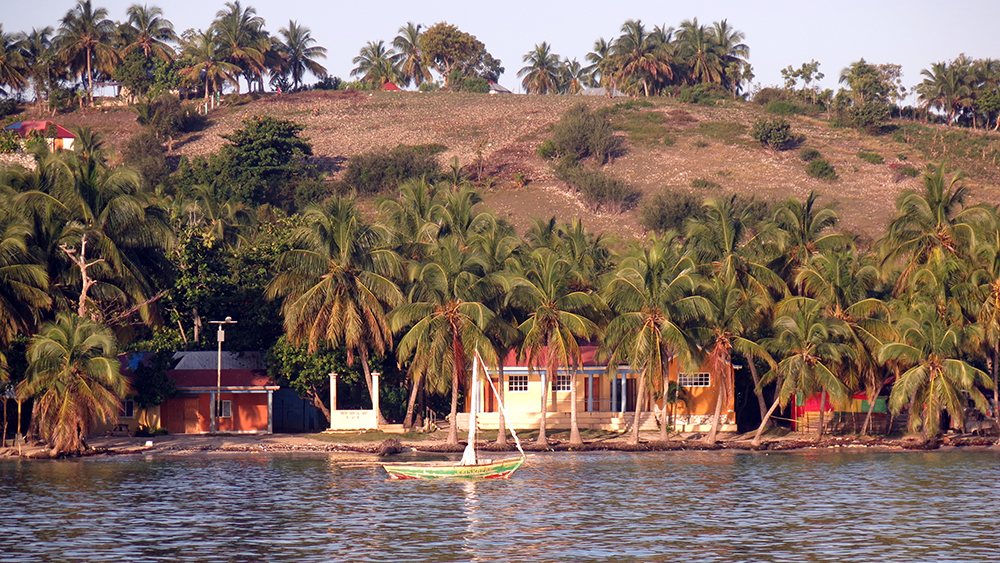
Life on the island moves at a very leisurely pace. The village of Cacor has a school, a church and a community centre which pumps out a mixture of evangelical music, Calypso rythms and funky Haitian tunes. When the kids aren’t in school they paddle out in their canoes dugout from the trunks of huge mango trees to knock on our hull and ask for bonbons, pens and notebooks. The fishermen come by to sell us their catch; the problem of overfishing is very apparent in the small lobster and tiny fish that they offer us. Other men visit to ask for jobs cleaning the hull, polishing or guiding to the market or a nearby beach; anything to earn a few Haitian gourds.
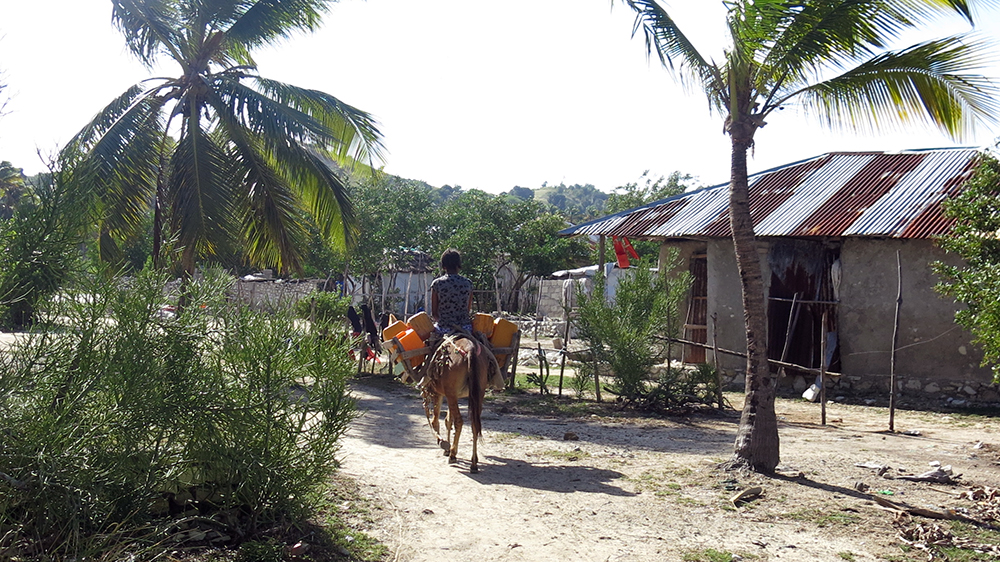
The poverty here is appalling, driven mostly by a very limited freshwater supply and a lack of work. Tourists who used to visit have been scared away by the unpredictable violence and instability on the mainland and the three hotels on the island are either struggling or closed. The visiting cruisers provide a trickle of income and are warmly welcomed, although the continuous knocking on the hull can becoming a bit annoying. It is safe to travel around the island and we leave the dinghy unlocked on the beach, the locals will look after it.
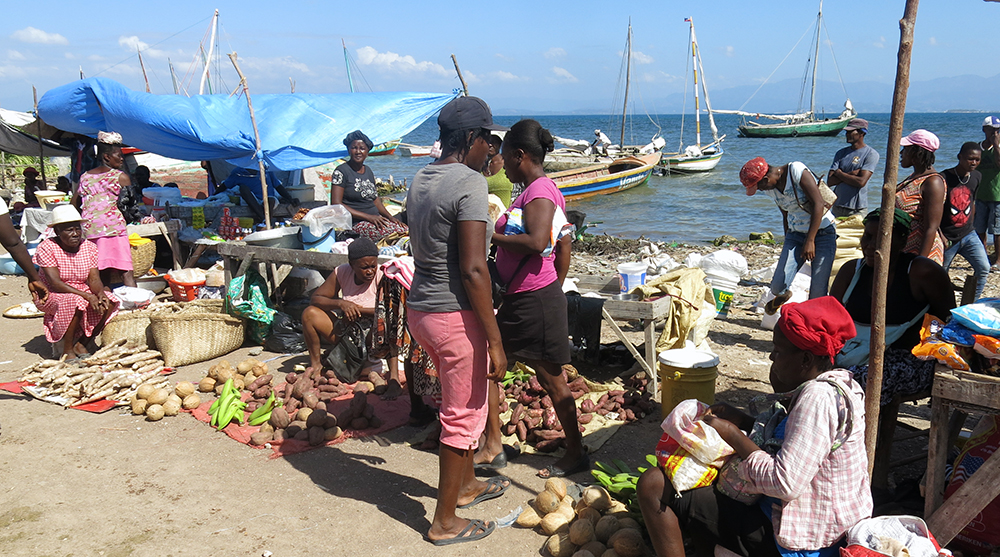
Market days in Madame Bernard, the largest village on Ile a Vache, are Monday and Thursday and the walk there follows a muddy footpath along the coast through several fishing villages. The solid-looking houses are built of stone with rusty corrugated iron rooves and are beautifully painted, each stone picked out in gentle pastel colours. The market is very African with small piles of produce laid out on rickety wooden tables or the ground on plastic sheets. Sacks of rice or maize are doled out with a tin can and red chunks of goat or beef are prodded and haggled over in shrill, strident voices.
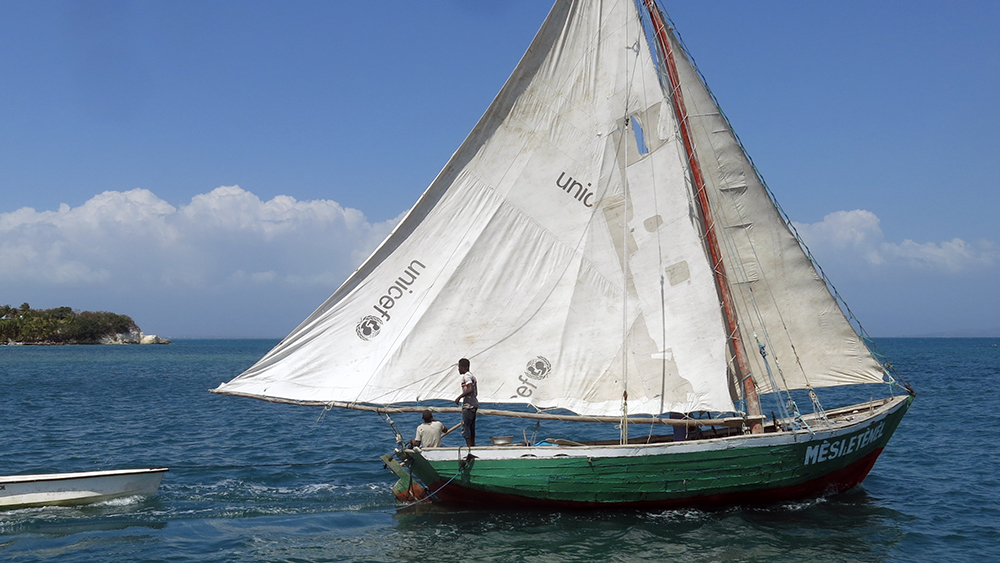
The men are fantastic sailors and a flotilla of white sails can be seen daily crossing the channel to fish or visit Les Cayes. The large, lateen rigged sails (made of tarpauline reused from Unicef or USAID or aid deliveries) are supported by long bowsprits and booms and look oversized for the small wooden boats. The men stand on planks and skillfullly navigate the boats across the bay even in the stiff breeze which blows up to 20kt in the afternoons.
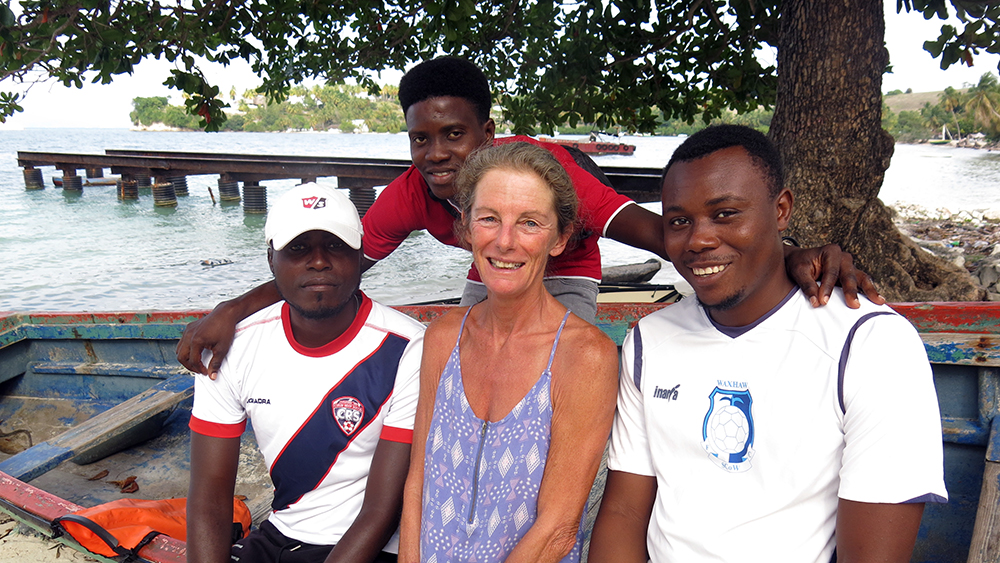
We’ve been here for three weeks now and have made friends with some of the people in the village. Pipi and Felix were the helpful guys who towed us in and drop in now and again to see how it’s going. Karma is the acting harbourmaster and comes by each week to collect the $10 anchoring fee. Kiki has done a few jobs around the boat and Colby has guided us to the market and helped me with the haggling. Wilna and Doudou cook delicious creole food and bring it to the boat and Wilna’s brother Wilnor makes a tasty punch from guava, pineapple, pomegranate and almonds laced with the local moonshine.

A few other cruising boats have passed through the anchorage since we have been here. Roger, a Swedish guy, lives here on his boat semi-permanently and has been very helpful (along with Erns and Marc) in arranging the DHL delivery of our engine part to the island. A Russian/French couple we had met in Cienfuegos in Cuba dropped anchor for a few days, it was nice to see Tatiana and Hubert again. We enjoyed meeting the crews on a couple of French catamarans who also came in last week en route for Martinique.
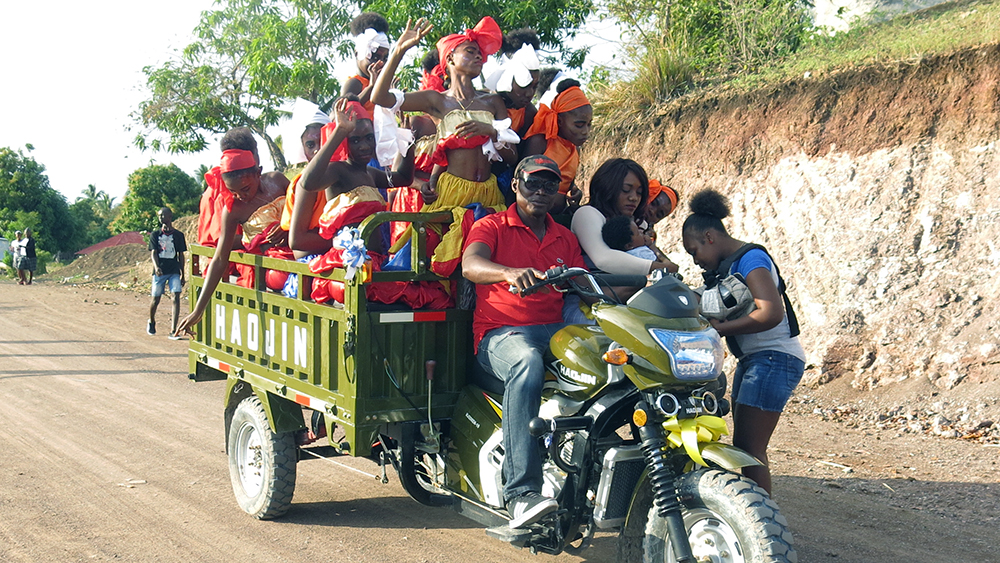
Carnaval time has come around again and I went to Madame Bernard with Roger and some of our friends from the village. Neil didn’t come as he had been knocked out by a nasty flu which laid him low for about ten days, he felt very unwell but is on the mend now. The Carnaval parade was very simple; a truck loaded with throbbing loud speakers and gaudily dressed dancers and various other hangers-on, and a yute carrying the Carnaval king and queen which kept breaking down. The crowd dancing along behind the procession were lively and happy, excited to have a three day party to hang out with their friends. When we called it a night and flagged down a couple of motorbikes to take us home the festivities were still going strong.

We’ll have many fond memories when we finally move on from Ile a Vache.
Suzy

